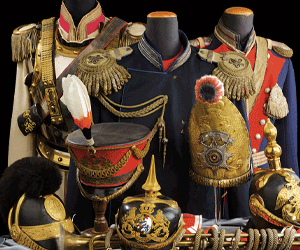Zollgrenzschutz Water Customs Dagger Hangers
SKU: 73.GOR.04.03.002
Estimated market value:

Estimated market value:
Attributes
History
The Zollgrenzschutz (Customs Border Guards) has its roots in the Grenzaufsichtsdienst (Border Surveillance Service) established in 1919. Before the First World War, every German state managed its own border units, but in the Weimar Republic this was done at the national level for the first time. The Grenzaufsichtsdienst was a subdivision of the Reichsfinanzministerium (Ministry of Finance). It is not to be conflated with the Grenzpolizei (Border Police), a subdivision of the German Police.
Initially, the organisation was tasked with preventing smuggling and illegal border crossings. This changed when its members were deployed to most of the occupied territories during the war. Border guards saw action fighting enemy military troops, especially during the final war years, as well as partisans. They were also tasked with foiling espionage.
Under Third Reich rule, not much changed in the beginning. However, SS leader Heinrich Himmler, who took control of the German Police in 1936, also tried to be placed in charge of the border guards. His advances were warded off in 1937. At the same time, the term Zollgrenzschutz was first used, and sometimes Zollgrenzdienst (Customs Border Service) as well.
1937 also brought changes to the border guards’ uniforms, which were designed in a new style more akin to the uniforms of the army. Throughout the late 1930s, personnel numbers increased in preparation for the coming war. A need was felt to watch the neighbouring countries more closely.
In order to achieve readiness, especially in the case of an armed invasion, the VGAD (Verstärkter Grenzaufsichtsdienst, Reinforced Border Surveillance Service) was trained as an auxiliary border guard force. It was made up of conscripts that had received basic military training. They were called into action during the annexation of Austria, the Sudetenland, Memel, and Czechoslovakia. During the war, the VGAD became a permanent part of the Zollgrenzschutz to the point that both names were used interchangeably.
In July 1944, after the Stauffenberg assassination attempt, Himmler finally convinced Hitler to place the Zollgrenzschutz under his control, and it was merged with the border police.
The Zollgrenzschutz daggers were suspended by a double hanger strap that was attached to two swivel rings on the upper two metal fittings of the scabbard. The hangers are made of black moire on black velvet backings. The oval hanger buckles are of a dull gold colour and feature an oak leaf design.


Comments
Sign in to comment and reply.


Scroll Top